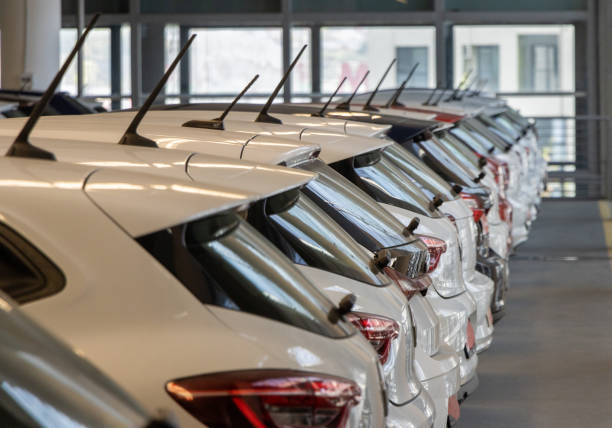A empolgação e os detalhes que cercam a aquisição de um carro novo muitas vezes podem desviar nossa atenção das essenciais características de segurança. Contudo, como consumidores conscientes, é fundamental explorar as variadas opções de segurança disponíveis nos veículos. Devemos assumir a responsabilidade de tomar decisões que assegurem a proteção, tanto para nós quanto para nossas famílias.
1. Standard vehicle safety measures
Seat belt
Airbags are an essential safety feature that has been preventing fatalities and injuries for years. To get the most out of them, you need to know what types they are and where to place them.
2. Anti-lock braking system
Learn how the anti-lock braking system (ABS) works to prevent the wheels from locking during sudden braking, giving you more control in an emergency.
Electronic Stability Control
ESC goes a long way in preventing accidents by maintaining control during skidding or loss of traction.
3. Revolutionary security solution
Automatic Collision Avoidance System
Study how FCW uses sensors to predict drivers of impending collisions so they can avoid them.
Automatic Emergency Braking (AEB) is an improvement over FCW that automatically applies the brakes if the driver does not react quickly enough, minimizing the impact of a collision.
To avoid a collision, it is important to understand how Lane Departure Warning (LDW) prevents drivers from hitting oncoming traffic.
Dive deeper into the crash test data
Learn how to interpret the data from crash test ratings from organizations like the NHTSA and IIHS so you can make an informed choice.
4. Safety features
Small vehicle
- Start with compact cars that combine safety and space efficiency and discover how safety features differ per car type.
- SUVs combine the appeal of adventure with the importance of strong safety features and explore safety issues unique to SUVs.
- If you’re looking for powerful performance, check out the safety features designed specifically for your truck.
5. Historical Perspective
It’s a valuable exercise to remember the humble beginnings of safety features like seat belts and look back at how far we’ve come.
Latest progress
Learn more about adaptive cruise control and blind spot monitoring, two of the latest developments impacting automotive safety.
Consistent Maintenance
Let’s understand: It’s crucial to maintain your security features regularly so that they’re always available when you need them most.
6. Customer feedback
Get first-hand knowledge about security features by reading reviews written by real customers. This will help you make better decisions.
Secure personalization options
View the optional security features that you can personalize to your own taste and wishes.
Evaluate the pros and cons
When balancing the two competing priorities of safety and cost, keep in mind that the former is an investment in the viability of the latter.
- Current and emerging trends in vehicle safety
- Autonomous driving Look to new technologies to reshape road safety.
7. Artificial intelligence
Discover how artificial intelligence can help with proactive safety measures, such as predicting and preventing hazards.
- Buy the vehicle that best suits your needs
- Keep your requirements in mind
- Make sure safety fits your lifestyle and base your decision on your specific needs.
- Seek advice from professionals in the field who can point you to models with top-notch safety features.
- Safety features for test drives
- During a test drive you can see the technology in the safety features up close, so you can make an informed decision.
- In order to make an informed decision, let’s separate fact from fiction and debunk common myths about car safety features.
FAQs
1. Are cutting-edge safety features really worth the additional money?
Learn why it’s important to put money into high-tech safety features for peace of mind in the long run.
2. In terms of crash testing, are all vehicle models equal?
Compare and contrast the various vehicle models’ crash test ratings.
3. Is it possible to install aftermarket safety equipment on older cars?
Investigate the options for enhancing the safety of older vehicles.
4. What is the recommended frequency of maintenance for safety features?
Find out how often you should service your safety features to keep them running smoothly.
5. When it comes to driving safely, what part does insurance play?
Examine the link between insurance policies and placing an emphasis on safety features when choosing a vehicle.
Conclusion
When car safety features are less complex, consumers can make more informed purchases. Before you go car shopping, make sure you prioritize safety and familiarize yourself with changing conditions.



